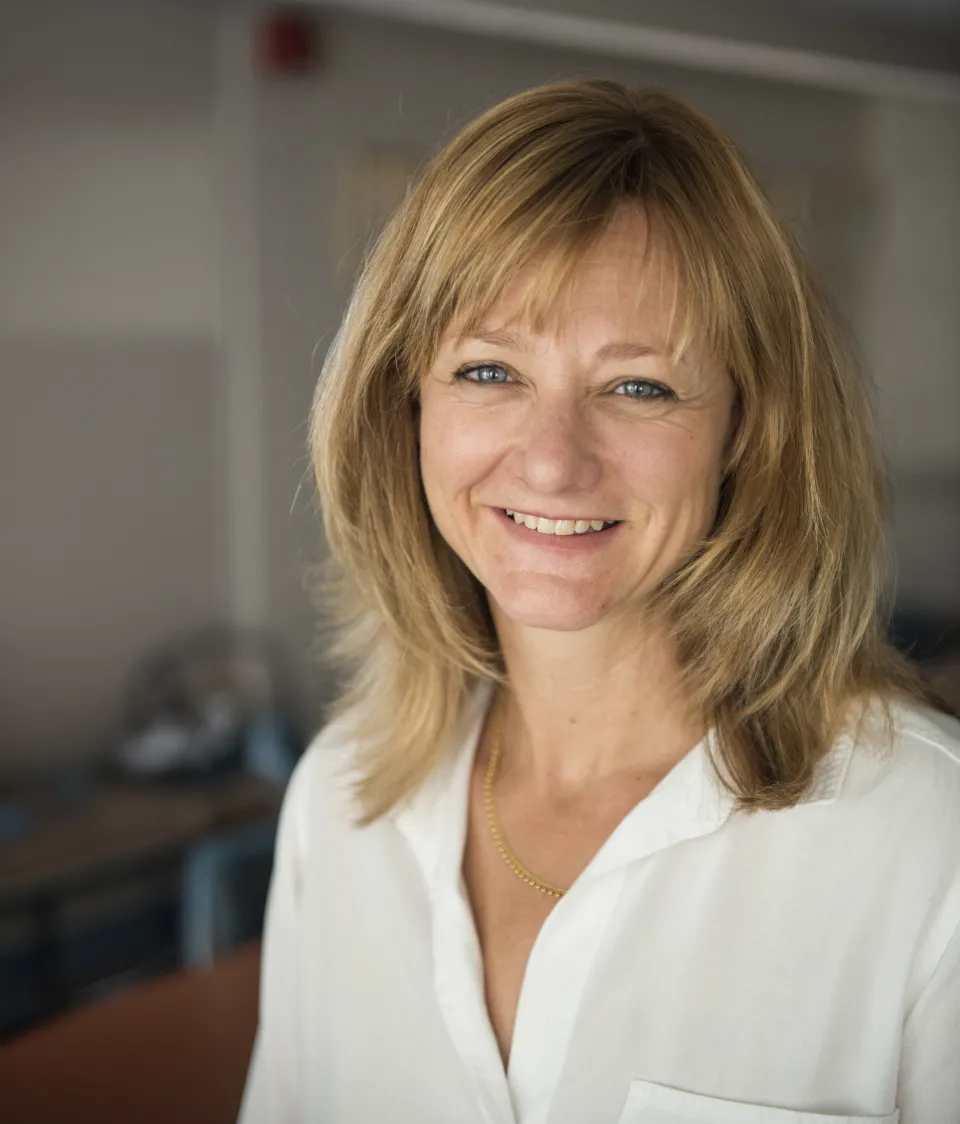Lost Pages, Found Voices
Research & Inquiry
Uncovering the story of a forgotten feminist movement
Published December 20, 2023
How does research lead to a book that one Smith professor had not even planned to write? Elisabeth Armstrong, author and professor of the study of women and gender, answers that question here. In her account of how the research process evolved, she describes her investigation into an anti-imperialist, transnational feminist movement that scholars forgot. A circuitous trail led her all over the world before surprisingly landing her back at the Sophia Smith Collection of Women’s History, where she had a lucky break. The result of her quest is her newest book, Bury the Corpse of Colonialism: The Revolutionary Feminist Conference of 1949 (University of California Press). She shares her reasons why the obscure story from 1949 should be known, and what it reveals about the transnational feminist movement—formal and informal networks of women’s groups across nation-state borders—in 2023.
“I tripped over the story of the Asian Women’s Conference while writing another book. The Teen Murti Archives at the Nehru Memorial Museum and Library in New Delhi has a wealth of materials about the nationalist women’s movements that bubbled with energy throughout the 20th century. I was writing a book about one of them that emerged in 1981—the All India Democratic Women’s Association—and sought to understand its roots in women’s anti-colonial organizing; thus, I sought activists’ letters and movement magazines that flourished during the 1940s and 1950s.”
“Hajrah Begum, a revered women’s movement leader, told a funny story in her oral history. With a keen eye for detail, she described the journey of 40 Indian women traveling to Copenhagen, Denmark, in 1953 for the leftist Women’s International Democratic Federation’s third international conference. Their contingent arrived a few days before the conference was scheduled to begin. Dressed in saris and shalwar kameez, they had plenty of time to explore the city, much to the fascination of Danish residents. More effectively than any announcements, according to conference organizers, their arrival spread the word about the conference to the whole country, and Danish people filled the streets to welcome the conferencegoers in a parade.”
Armstrong’s new book was released on International Women’s Day in 2023.
“Hooked, I had to know more. What was this conference of radical leftist anti-colonial women, held only four years after the end of World War II? Who was part of the Women’s International Democratic Federation? Why had I, a professor who focuses on transnational women’s movements, never heard of it before? In answering my questions, I learned that Asian, African, Latin American, and Caribbean women built the transnational women’s movement we know today. I learned that the end to colonial occupation, the end to systemic racism, and the end to fascism galvanized the international women’s movements emerging in the mid-20th century. The research process revealed to me that even scholars of transnational feminism don’t know where we come from. I discovered the most from generous scholars asking similar questions, and from the women and their families around the world who peopled the movement.”
“When I started this project, there were roughly five scholarly articles and one book that mentioned the Women’s International Democratic Federation, which began in 1945 and had over 80 million members in 1953, when they had their conference in Copenhagen. It started with a good story and continued like a mystery novel. For six years I searched the world—in Lebanon, India, Holland, France—and during the pandemic I worked with scholars in Indonesia and China. But no one who attended the Asian Women’s Conference was still alive, and for six years I could find no materials that described the events, speeches, debates, or resolutions of the conference.
Professor Elisabeth Armstrong. Photo by Jim Gipe
“The Sophia Smith Collection of Women’s History provided me with that lucky breakthrough in 2014. A woman named Elizabeth (Betty) Boynton Millard—whose mother, Elizabeth (Bessie) Bell Boynton, was a Smith College student from 1900 to 1902—attended the Asian Women’s Conference in Beijing. Betty’s niece, Olivia Millard, who was impressed with our holdings of leftist women’s activist material, gave Betty’s records to the Sophia Smith Collection in 2011. By 2014, archivists allowed me access to them, even though they weren’t fully processed yet. Betty kept detailed diaries, photographs, illustrations, and even a pristine handkerchief woven by Chinese women in honor of the conference. After that, the process unfurled smoothly, with letters describing the conference planning, official reports, and journals written by activists and delegates.”
“Some lessons for the international women’s movements of today: Create international platforms to share the widest range of women’s activism. Find common dreams; in the mid-20th century, that dream was for a just, equitable peace to build lives of plenty, of laughter, and of the possibility for every person, young and old, to live their fullest life. Allow those common dreams to unfurl with all the possibilities, all the differences intact. Many of their goals in 1949 are still our goals: active peace; equal rights for all; reproductive justice for all; independence and economic well-being for all; and the end to discriminatory, sexist practices.”
Headline photo: An archival image from the 1949 Asian Women’s Conference in Beijing. Courtesy of the Sophia Smith Collection of Women's History.


